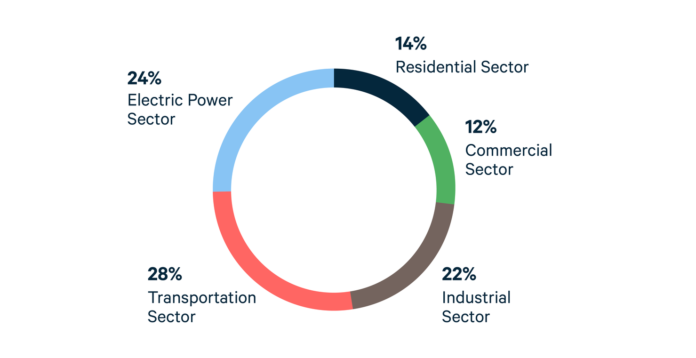As the world grapples with the challenges of climate change, one of the most pressing issues is reducing carbon emissions to mitigate its effects. Carbon abatement, the process of reducing greenhouse gas emissions, is a critical step toward achieving global climate goals. However, this process comes with its own set of challenges, particularly in terms of cost.
The concept of carbon abatement cost refers to the economic expense associated with implementing measures to reduce carbon emissions. This blog will delve into the intricacies of carbon abatement cost, its factors, and its importance in the fight against climate change.
Understanding Carbon Abatement Cost
Carbon abatement cost can be thought of as the price tag attached to each ton of carbon dioxide (CO2) equivalent that is reduced or prevented from entering the atmosphere. This cost encompasses various strategies and technologies aimed at lowering emissions, such as transitioning to renewable energy sources, improving energy efficiency, adopting sustainable transportation, and implementing carbon capture and storage technologies.
Factors Influencing Carbon Abatement Cost
Several factors play a crucial role in determining the cost of carbon abatement:
- Technology and Infrastructure: The availability and maturity of technologies play a significant role in the cost of carbon reduction. Well-established renewable energy technologies like solar and wind have become more cost-effective over time, making them attractive options for reducing emissions. On the other hand, emerging technologies, such as carbon capture and storage, may involve higher costs due to their complexity and relatively limited deployment.
- Energy Mix and Source: The carbon intensity of the energy mix used in a region dramatically impacts abatement costs. Shifting from fossil fuels to cleaner energy sources like wind, solar, and nuclear power can substantially reduce emissions. Still, this transition may involve upfront investments that can influence the overall abatement cost.
- Economic and Policy Landscape: Government policies, regulations, and market incentives can significantly influence the cost of carbon reduction. Carbon pricing mechanisms, subsidies for renewable energy, and tax incentives make specific abatement strategies more financially viable. Conversely, lacking supportive policies can make emission reduction efforts more expensive.
- Geographical Variability: The abatement cost can vary greatly depending on geographic location. Factors such as resource availability, climate conditions, and infrastructure development can impact the feasibility and cost-effectiveness of different carbon reduction strategies.
- The scale of Implementation: The scale at which abatement measures are implemented can influence costs. Large-scale projects tend to benefit from economies of scale, reducing emission reduction costs per unit.
Importance of Assessing Carbon Abatement Cost
Assessing carbon abatement cost is crucial for several reasons:
- Informed Decision-Making: Policymakers, businesses, and individuals need accurate information about the cost of various emission reduction strategies to make informed decisions. By understanding the cost implications, they can prioritise strategies that provide the most significant environmental benefits at reasonable costs.
- Optimal Resource Allocation: Resources for addressing climate change are often limited. Assessing abatement costs allows us to allocate resources efficiently, focusing on strategies that provide the highest return on investment for emissions reduction.
- Stimulating Innovation: Understanding abatement costs can drive innovation in technology and policy. Businesses and researchers are more likely to invest in developing cost-effective solutions when they clearly understand the economic landscape.
- International Collaboration: As countries work together to meet global climate targets, assessing abatement costs helps foster international collaboration. By sharing information about the cost-effectiveness of different strategies, nations can collectively work toward reducing emissions most efficiently.
- Tracking Progress: Setting emission reduction goals is essential, but tracking progress is equally important. By comparing projected abatement costs with actual costs, stakeholders can assess whether their efforts are on track and make necessary adjustments.
The challenge of mitigating climate change necessitates a comprehensive understanding of the cost of reducing carbon emissions. Carbon abatement cost is a guiding metric, enabling us to identify cost-effective strategies contributing to a sustainable future.
As technology advances, policies evolve, and economies adapt, the assessment of abatement costs will play a vital role in shaping our approach to tackling climate change. By making informed decisions based on these assessments, we can work toward a more resilient and low-carbon future for future generations.

